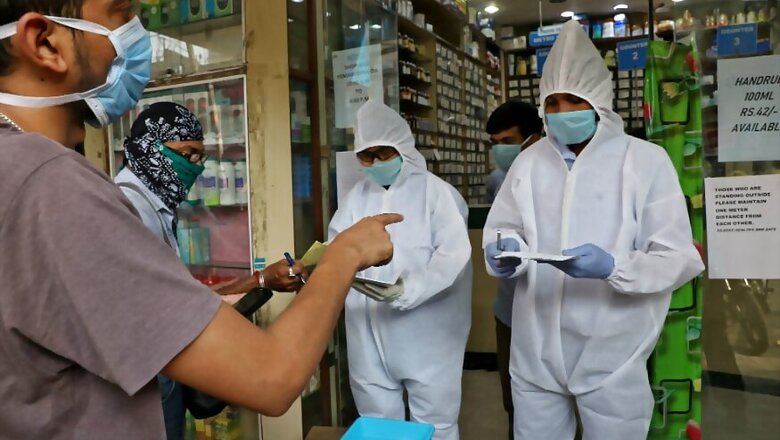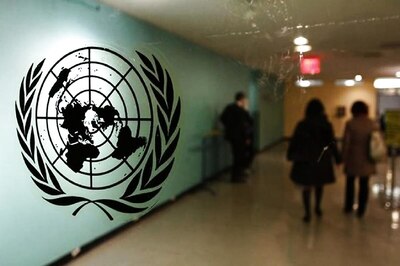Wary of Covid-19 Situation, Bengal Issues Back-to-Back Treatment Protocols. But How Useful are They?

views
Five circulars in a week — two for government hospitals and three for private healthcare facilities – by the Bengal state health department, all issued for revising and updating Covid 19 management protocols, seem to point towards the government’s impetuosity in dealing with the worsening virus scenario in the state.
The circulars, issued between June 29 and July 5, came during a period when the total number of positive cases in Bengal shot up from 17,907 (on 29 June) to 22,126 (on 5 July) and the number of deaths rose from 653 to 757. That translates to more than 700 new cases and 17 deaths every single day, the most damning figures for a week since the state registered its first Covid positive case on March 17, this year. The period also witnessed, as per official health bulletins, a marginal rise in recovery rate from 65.44 per cent to 66.48 per cent, but which is still about 6 per cent higher than the national average.
The first in the series of Covid management advisories by the government, dated 29.06.2020, is aimed at state-run dedicated Covid hospitals and stresses on the need for “careful triaging of patients”, maintenance of top sheets and daily notes on patients. Among other treatment protocols which the hospitals need to follow, the advisory also asserted on the need for appropriate oxygen prescription, use of steroids under deteriorating clinical conditions and use of anticoagulant prophylaxis or pre-emptive blood thinners in moderately infected patients.
In a subsequent advisory, dated 03.07.2020, again meant for government hospitals, the health department repeats most of the points made in its previous circular but adds two vital points:
The need to keep ICU beds reserved only for critically ill patients by providing “adequate triage with oxygen and other supportive measures in wards or HDU” before referring patients to ICU.
The need for “timely referral of patients after initial stabilization” before it is too late.
It is evident that these two back-to-back advisories, issued after the state went through treating the infected for more than three months, pointed at the treatment gaps which continued to remain at state-run hospitals and identified by the state’s specially drafted team of experts during its surveillance visits.
On 02.07.2020 the state health department issued its first advisory for private Covid 19 healthcare facilities in the wake of findings by the experts during their surveillance visits. Besides top sheet maintenance of patients, following of anticoagulation protocols and escalation of oxygen therapy before putting a patient on mechanical ventilator, the advisory stressed on the need for hospitals to have “proper antibiotic policies” and adopt guideline-prescribed infection control practices to avoid “hospital acquired Covid infection”.
Two days later, on 05.07.2020, the state followed this up with a new set of advisory, this time instructing hospitals to first attempt “Prone Awake Ventilation” on patients before putting them on conventional mechanical ventilation. This, doctors confirmed, was a move to try and keep ventilators free for critical patients since the equipment are in short supply.
The circular instructed that “indiscriminate use of antibiotic, particularly of higher generation, on admission, should be stopped” since “experience shows that it may cause resistance and harm in many cases”. It also directed hospitals to keep in readiness super-speciality teams, especially nephrology and pulmonology, for advice in relevant cases.
Since the instructions followed after the expert team “noted certain deficiencies” in some private Covid hospitals, it is evident that hospitals are still juggling with treatment protocols without really having a thorough understanding of management of this crisis that is slowly spiralling out if control.
The treatment protocol issued on 04.07.2020 was perceptively aimed at bringing down mortality numbers in the state. The advisory included ECG for all and ABG for moderate category patients, adequate oxygen trial by appropriate appliances before putting patients on ventilators for hypoxia and close and intense monitoring of ICU patients. It repeats the 2 July advisory of implementing proper antibiotic policies in hospitals to prevent hospital acquired infections, including ventilator associated pneumonia.
But interestingly, the advisory also put on record certain basic hospital protocols like segregation of Covid and non-Covid patients to prevent cross infection and stabilization of a sick patient’s vitals and providing oxygen support during transport of the patient to another facility.
Dr Saswati Sinha, Senior Consultant, Critical Care, AMRI Hospitals, felt that standardisation of Covid management across government and private healthcare units of the state are the need of the hour. “Patients are pouring into all kinds of set ups and certain core critical care issues need to be addressed. Rather than relegating things to our memories it is necessary to have a check list of crucial points that should not be missed when a Covid 19 patient is admitted. That’s why the government advisories are necessary and welcome,” she said.
Asked about the real chances of implementing these protocols, Dr Sinha said: “Things are evolving very fast in the field of Covid management and that applies to both medical and administrative domains in hospitals. We are learning on the job and cannot deprive our patients of the benefits of the day to day developments. The back to back protocol advisories keep adding to the check list, but their crux remains the same which is to bring uniformity in treatment. Even if we are able to implement 80 per cent of the advisories, we will consider having done a good job.”
Said Dr Arindam Mukherjee, Pulmonologist and Critical Care expert attached to Tata Medical Centre, Kolkata: “With progress in treatment and standardised protocols we will soon arrive at a situation where patients would occupy critical care facilities for longer duration. With the rising number of patients, we may reach a new crisis where we would severely fall short of such equipment and ICU beds. Personally, I think the government should look at creating more and more small Covid-dedicated units across the state with critical care support who would absorb and treat these patients better than the bigger facilities.”
That’s some food for thought for the Bengal government in terms of taking a fresh look at its Covid management policy.


















Comments
0 comment